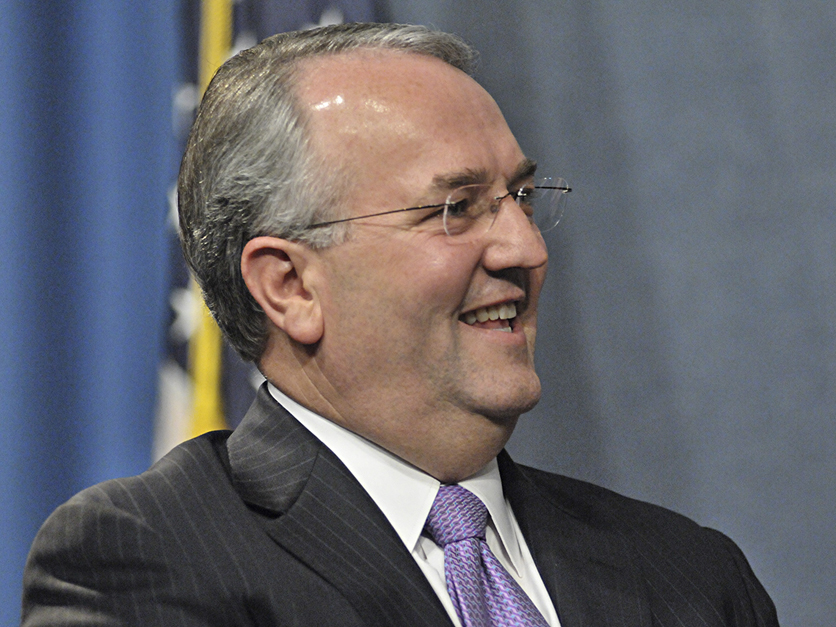WASHINGTON, Sept. 6, 2017 - CEO salaries at major nonprofit trade organizations in the agriculture, food and energy space have been trending upward for several years and this year is no exception.
American Society for Association Executives (ASAE) Chief Administrative Officer Robert Felton says as long as the economy continues to stay strong, there’s no reason to doubt salaries will continue to rise next year, too.
However, some CEOs saw some downward movement in their benefit packages, which includes an expected bonus, deferred or retirement payments, tax-free benefits, and “other” miscellaneous compensation. Reasons for the decrease aren’t exactly easy to define, however, Felton offered some possibilities.
“Generally, when you see a decrease in variable pay components, it’s based on performance. For example, if an organization didn’t do as well as they thought that year, it would be reflected by a smaller bonus. And when a CEO retires and is replaced, there often is a gap where no bonus is paid," Felton added.
Ten of the top jobs we cover changed hands since Agri-Pulse’s 2016 report, which could provide some explanation as to why there was a slight dip in variable pay. But those pay levels could climb substantially as new executives settle into their jobs.
For well over two decades, Agri-Pulse has tracked CEO salary levels to help better inform board members responsible for making decisions about compensation packages. CEO salary levels and benefit packages often reflect the size of the organization, responsibilities, and geographic location. But increasingly, “other” compensation for these busy executives includes travel for spouses on business trips, reimbursement for cellphone bills, club membership and much more.
For example, the American Bankers Association’s CEO Tom Keating II is provided with first class airfare for himself and companions, financial planning with tax preparation, social club dues for business use, and a driver – mostly for business, but personal is covered, too, according to the association's 990 tax form, which the Internal Revenue Service requires all nonprofits to file and make publicly available. Keating’s total compensation topped $2 million in 2015.
According to a recent report from ASAE on 2016-2017 benefits, 34 percent of the associations that offer CEO-specific benefits provide for spouse or companion travel and almost 80 percent cover mobile phone monthly fees. Over half cover device purchases, too. More organizations are also covering tablet purchases — 38.5 percent — and 22.6 percent cover the monthly fees for tablets.
Agri-Pulse relies primarily on non-profit tracker Guidestar.org for obtaining compensation information but also contacted dozens of organizations – some which had not yet reported their 2016 data but offered their most recent year on file. USDA’s Agricultural Marketing Service provides data on checkoff board CEOs for this report.
The American Petroleum Institute’s Jack Gerard, who was brought on board as CEO in November 2008, once again comes out the heavyweight champion for this year’s report, with a base salary of $2.68 million. His base salary saw no major increase from the prior year, but his bonus jumped by about $215,000 and he got a $400,000 boost in his retirement/deferred payment, bringing his total compensation for 2015 to $6.3 million. This year he earned nearly double what the next highest CEO on our list earned and millions more than those who represent one of his frequent targets – the ethanol industry.
Dawn Sweeney, head of the National Restaurant Association, came in at second highest earner on our list of food, farm, energy and rural leaders. She started out with a base salary of $1.296 million and with benefits, her total compensation package reached nearly $3.49 million.
Earning the third highest compensation package on our list is Pamela Bailey, who heads up the Grocery Manufacturers Association. Bailey, who’s been with GMA for almost nine years, earned $1.2 million as a base salary. With a retirement/deferred payment of over $1.1 million, Bailey earned a total compensation of $3,032,292.
A handful of CEO’s earned substantially less than other top employees within their organization. Take Ingrid Newton, who heads People for the Ethical Treatment of Animals (PETA), for example. Running an “animal rights” organization that took in more than $63 million in revenues last year, she earned only $36,986 in base salary. In contrast, PETA’s Senior Vice President Kathleen Guillermo earns $116,505, more than three times Newton’s salary.
Felton suggested that some CEO’s make a political statement by earning such a small salary, adding “It’s not unusual for some charities to do that. It’s like a ‘super volunteer’ position.”
Click here for a detailed look at compensation data gathered by Agri-Pulse for our 2017 survey and the explanatory footnotes.


